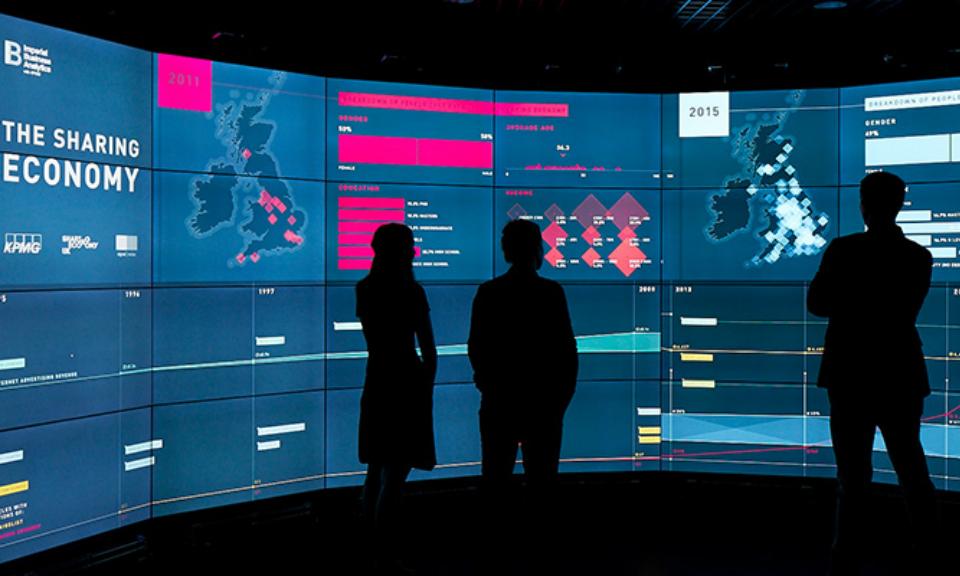Written by
Published
Category
Key topics
How AI and machine learning will affect business has been a source of fear, panic and excitement for decades. But this time it’s different: AI is actually here
Employers are busy worrying about the politics of new technology that will work alongside, and possibly replace, humans. But have we considered how it will actually happen? What kind of practical strategies will businesses need and how will they go about organising the deployment of AI on a practical level?
Artificial intelligence promises to usher in a new industrial revolution (if it hasn’t already). And just as the original industrial revolution destroyed traditional labour but created new jobs, AI will create new opportunities. Robotics, AI and machine learning will affect almost every industry (whether those industries like it or not), but for them to be as effective as possible they need to be integrated into a human workforce.
Some roles are relatively easy to automate: already ‘chatbots’ interact with customers on websites at the most basic level, but these are little more than pieces of software answering predictable questions. At the other end of the scale, AI promises to make cancer diagnoses with greater accuracy than doctors. Whatever the application, there needs to be clarity around how these neural networks are managed: how the doctor uses the computer’s diagnosis to prescribe treatment, or how staff soothe a customer disgruntled with their digital helper.
The overriding problem companies report is a dearth of experience in this field
How AI will affect your company
Building on research we have conducted at Imperial Business Analytics, we have assembled a roadmap for companies dealing with the introduction of AI to their sectors. Specifically, we’ve focused on the challenges faced by bankers, lawyers and accountants. We’ve looked at the technology that exists already, and ahead to what is on the near horizon. By looking at a range of scenarios, we’ve tried to create a blueprint of how companies can deploy AI successfully. Without such a clear map, any predictions are just educated guesses.
Naturally, HR departments are concerned about changes to their workforces. When will they start happening? Who will be affected? How are companies going to train staff to interact with the new technology? Will there by layoffs? If so, what kinds of tasks and jobs will be affected most? And when?
Unsurprisingly, not all companies are keen to embrace these changes. In the legal sector, where access to professional expertise is charged by the hour, AI and the efficiencies it promises don’t sit naturally in the business model. But at the same time, there are a host of start-ups that can process legal documentation faster and cheaper – will this spell the end of the paralegal career? Business models will affect how and when AI is adopted: law firms might come late to the party, but commercial banking is already adopting it with gusto.
Robotics, AI and machine learning will affect almost every industry (whether those industries like it or not)
Three big questions
Our roadmap looks at three main areas. First, how is the science helping? Does the technology exist at a sufficient level to offer a solution?
Second, are these solutions already viable? Are they ready to function in a real life setting? It’s one thing to have them in theory, another to implement in a company. Here we’re looking at some technologies that are already well developed (such as data science and dynamic optimisation) as well as some (such as machine learning) that are still in development.
Third, how willing is a company or sector to adopt this technology? Will some be adopted more successfully than others? We’ve created a forecast of how every particular department in our three target sectors (banking, law and accountancy) will be affected, and how we expect companies to react (though naturally these are predictions).
In the legal sector, where access to professional expertise is charged by the hour, AI and the efficiencies it promises doesn’t sit naturally in the business model
Where will companies struggle the most? Probably the hardest conversations they will face will be about how to introduce non-human workers to their human counterparts, i.e. how they will overhaul their current ways of working.
There’s no single and exact answer as to when AI, robotics and machine learning will become an everyday part of working life, but broadly we’re looking at a range of 20 to 50 years. Some sectors will move faster than others: larger firms are usually more sluggish because changing values within such complex hierarchies takes time. Smaller companies will, by their nature, be willing and able to change more quickly.
The overriding problem companies report is a dearth of experience in this field. Universities are providing students with the right tools but there’s a huge gap that education can’t fill. Graduates don’t yet have the ability to put the technology in context. People who can adapt and learn as they go will be prized: this technology is changing every day, so keeping up to date will be essential.



